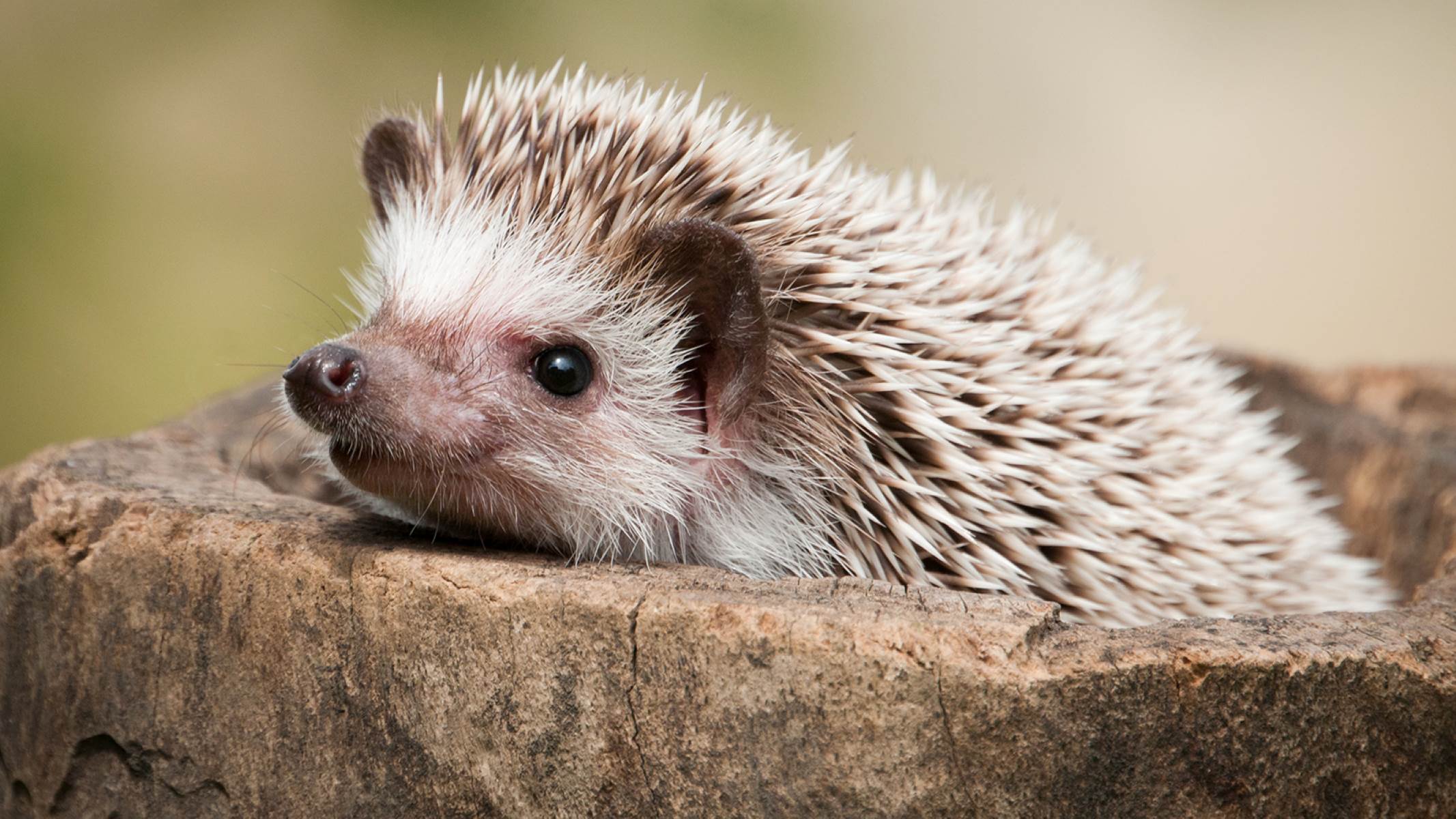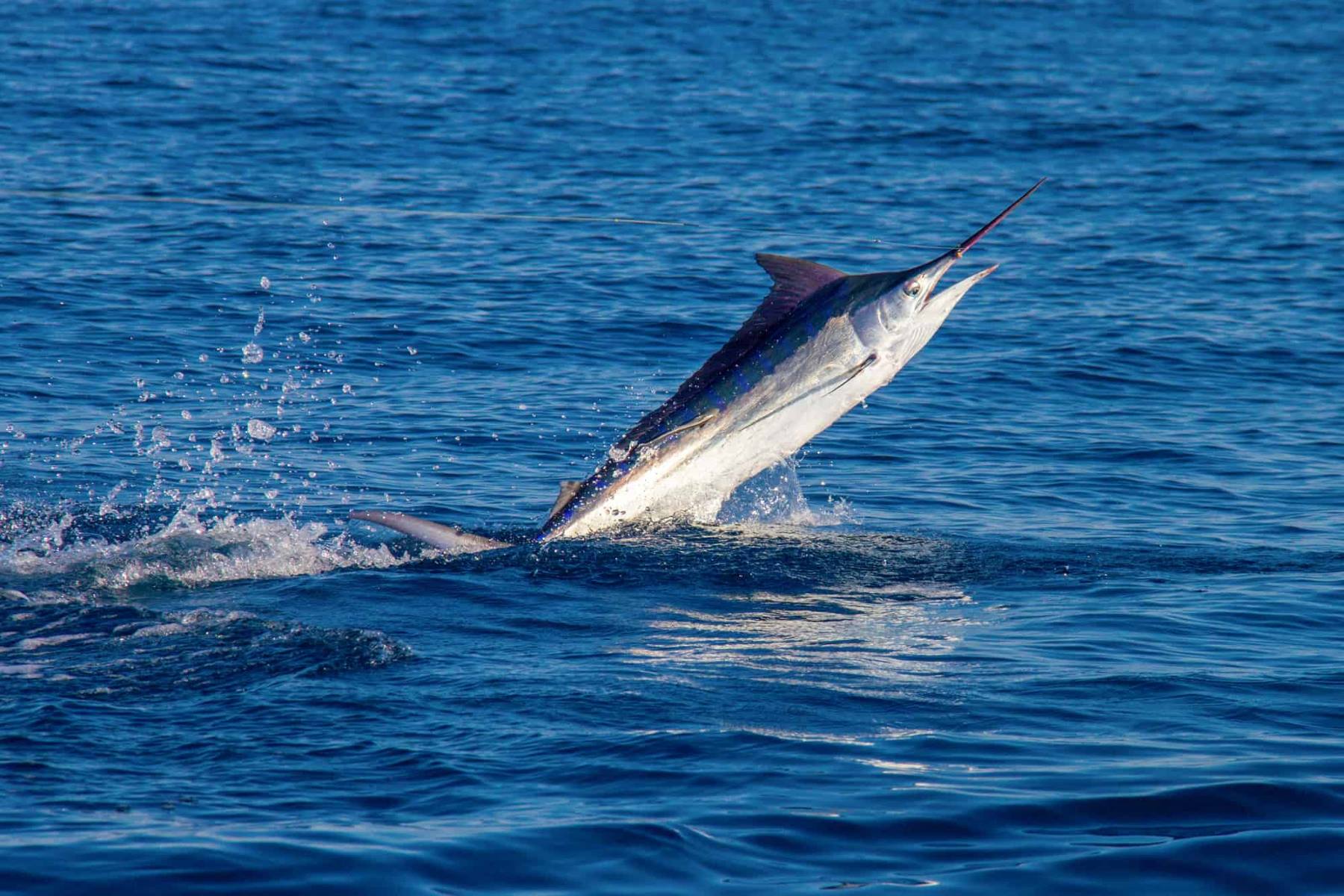Home>Pets & Animals>The Surprising Similarities And Differences Between Hedgehogs And Porcupines


Pets & Animals
The Surprising Similarities And Differences Between Hedgehogs And Porcupines
Published: January 20, 2024
Discover the intriguing world of hedgehogs and porcupines, exploring their surprising similarities and differences. Learn about these fascinating pets and animals.
(Many of the links in this article redirect to a specific reviewed product. Your purchase of these products through affiliate links helps to generate commission for Regretless.com, at no extra cost. Learn more)
Table of Contents
Introduction
Hedgehogs and porcupines are two intriguing creatures that often evoke curiosity and fascination due to their unique appearances and defense mechanisms. While they may share some similarities at first glance, a closer examination reveals distinct differences that set them apart in the animal kingdom. These spiky mammals have captured the imagination of animal enthusiasts and have become popular pets in some parts of the world.
As we delve into the world of hedgehogs and porcupines, we will uncover the surprising parallels and disparities that define these enigmatic creatures. From their physical characteristics to their habitat, diet, and reproduction, each aspect of their lives offers a captivating glimpse into the wonders of the natural world. By exploring their distinctive traits and behaviors, we gain a deeper understanding of the intricate tapestry of life on our planet.
Join us on a fascinating journey as we unravel the mysteries surrounding hedgehogs and porcupines. Through this exploration, we aim to shed light on the captivating nuances that make these spiky mammals both enigmatic and endearing. Let's embark on an adventure to discover the captivating world of hedgehogs and porcupines, where nature's marvels await our eager exploration.
Physical Characteristics
Hedgehogs and porcupines are renowned for their distinctive physical attributes, which contribute to their charm and allure. While both species are adorned with quills or spines, a closer examination reveals striking differences in their appearance.
Hedgehogs
Hedgehogs are small mammals characterized by their petite size and endearing features. Typically measuring between 5 to 12 inches in length, these nocturnal creatures have stocky bodies and short legs, which enable them to navigate their surroundings with agility. Their most prominent feature is the presence of approximately 5,000 to 7,000 spines that cover their backs. These spines, which are actually modified hairs, serve as a formidable defense mechanism against potential predators. Despite their spiky exterior, hedgehogs possess soft fur on their undersides, adding to their charm. Their round faces are adorned with beady eyes and a twitching nose, which they use to forage for food under the cover of darkness.
Porcupines
In contrast, porcupines boast a larger and more robust physique, with some species reaching lengths of up to 36 inches. These herbivorous mammals are recognized for their stout bodies and short legs, which are well-suited for their terrestrial lifestyle. The most striking feature of porcupines is their coat of quills, which are sharp, barbed spines that cover their entire body, with the exception of their underbellies. Unlike the spines of hedgehogs, which are relatively short and rigid, porcupine quills are longer and possess microscopic barbs that facilitate their penetration into the skin of predators. This formidable defense mechanism serves as a potent deterrent against potential threats in their natural habitat.
In summary, while both hedgehogs and porcupines are adorned with spiky armor, their physical characteristics exhibit distinct variations in size, spine density, and defensive mechanisms. These defining traits contribute to their unique allure and solidify their status as captivating denizens of the animal kingdom.
Habitat and Distribution
Hedgehogs and porcupines are inhabitants of diverse ecosystems, each with its own unique habitat and distribution patterns. Understanding the environments in which these creatures thrive provides valuable insight into their lifestyles and adaptations.
Hedgehogs
Hedgehogs are versatile creatures that can be found in a wide range of habitats, including woodlands, grasslands, and even urban areas. They are native to Europe, Asia, and Africa, with different species exhibiting specific habitat preferences. These nocturnal mammals are adept at navigating varied landscapes, from the lush undergrowth of forests to the open expanses of meadows. Hedgehogs are known to seek out sheltered locations such as hedgerows, thickets, and burrows, where they can retreat during daylight hours and raise their young in safety. Their ability to thrive in both natural and human-altered environments has contributed to their widespread distribution across continents.
Porcupines
Porcupines are renowned for their adaptability to diverse habitats, ranging from forests and deserts to grasslands and rocky outcrops. They are found in various regions across the globe, including North and South America, Africa, Europe, and parts of Asia. These herbivorous rodents are particularly well-suited to arboreal habitats, where they can climb trees and seek refuge in elevated dens. Their range extends across a spectrum of climates, from the arid landscapes of deserts to the dense foliage of temperate forests. Porcupines have also demonstrated resilience in the face of human encroachment, often coexisting with human settlements and agricultural areas.
In summary, hedgehogs and porcupines exhibit remarkable adaptability to a diverse array of habitats, showcasing their ability to thrive in ecosystems as varied as woodlands, grasslands, and urban environments. Their global distribution underscores their resilience and capacity to coexist with a wide range of environmental conditions, making them intriguing subjects for ecological study and conservation efforts.
Diet and Feeding Habits
Hedgehogs
Hedgehogs are primarily insectivorous, with a diet that consists mainly of various invertebrates such as beetles, caterpillars, worms, and snails. Their keen sense of smell and hearing enables them to forage for food during the night, using their sensitive snouts to root out hidden delicacies. Despite their preference for insects, hedgehogs also consume a small amount of vegetation, including fruits, fungi, and occasional carrion. This omnivorous inclination allows them to supplement their diet with a diverse array of nutrients, contributing to their overall health and vitality.
Porcupines
Porcupines are herbivores with a penchant for consuming a wide variety of plant materials. Their diet primarily consists of bark, twigs, leaves, and green plants, reflecting their role as vital contributors to the ecological balance of their habitats. With strong, chisel-like incisors, porcupines can gnaw through tough outer layers of trees and shrubs, accessing the nutrient-rich inner tissues. This feeding behavior not only sustains the porcupines but also plays a crucial role in shaping the structure and composition of their surrounding ecosystems.
Distinct Feeding Behaviors
While hedgehogs and porcupines differ in their dietary preferences, they both exhibit distinct feeding behaviors that underscore their specialized adaptations. Hedgehogs are adept at foraging for small prey in leaf litter and soil, using their acute senses to detect the slightest movements of their quarry. In contrast, porcupines are known for their arboreal feeding habits, often climbing trees to access tender foliage and bark. This unique behavior showcases their agility and resourcefulness in securing sustenance from elevated sources, contributing to their survival in diverse environments.
In summary, the dietary disparities between hedgehogs and porcupines highlight their distinct roles within their respective ecosystems. While hedgehogs thrive on a diet rich in invertebrates and occasional plant matter, porcupines subsist on a herbivorous diet, shaping their habitats through their feeding behaviors. These dietary nuances underscore the intricate relationships between these spiky mammals and the natural world, emphasizing their significance in ecological dynamics and conservation efforts.
Defense Mechanisms
Hedgehogs and porcupines are renowned for their formidable defense mechanisms, which serve as crucial adaptations for survival in their respective habitats. These spiky mammals have evolved distinct strategies to ward off potential threats, showcasing their remarkable resilience in the face of adversity.
Hedgehogs
Hedgehogs rely on their impressive array of spines as their primary means of defense. When threatened, they exhibit a fascinating behavior known as "self-anointing," where they produce frothy saliva and spread it across their quills. This peculiar act is believed to serve as a deterrent to predators, as the frothy saliva may contain a pungent odor that wards off potential threats. Additionally, hedgehogs are capable of rolling into a tight ball, tucking their head and limbs within the protective barrier of their spines. This defensive posture presents a formidable challenge to would-be predators, as the sharp spines create an impenetrable barrier, effectively shielding the vulnerable areas of the hedgehog's body. Furthermore, the spines themselves are designed with microscopic barbs that can become embedded in the skin of predators, causing discomfort and serving as a potent deterrent.
Porcupines
Porcupines possess a unique and highly effective defense mechanism in the form of their quills. These sharp, barbed spines cover the porcupine's back and flanks, providing a formidable defense against potential threats. When threatened, a porcupine will raise its quills, creating an imposing display that warns predators of the consequences of a potential attack. If the initial warning is disregarded, the porcupine can lash its tail, embedding quills into the predator upon contact. These quills are designed with microscopic barbs that facilitate their penetration into the skin of predators, causing discomfort and potential injury. This potent defense mechanism serves as a powerful deterrent, effectively protecting the porcupine from harm.
In summary, hedgehogs and porcupines exhibit remarkable adaptations in their defense mechanisms, utilizing their spiky armor to ward off potential threats in their respective habitats. These unique strategies highlight the ingenuity of nature and the diverse ways in which animals have evolved to thrive in their environments. The spiky defenses of hedgehogs and porcupines not only showcase their resilience but also serve as captivating examples of the intricate interplay between predator and prey in the natural world.
Reproduction and Life Cycle
Hedgehogs and porcupines follow distinct reproductive and life cycle patterns, each offering a fascinating glimpse into the complexities of their existence. Understanding the reproductive behaviors and life stages of these spiky mammals provides valuable insight into their roles within their respective ecosystems.
Hedgehogs
Hedgehogs are solitary creatures for much of their lives, coming together only during the breeding season. The mating rituals of hedgehogs are marked by intricate courtship behaviors, with males engaging in elaborate displays to attract potential mates. After successful mating, female hedgehogs undergo a gestation period of approximately four to six weeks, culminating in the birth of a litter of hoglets. These tiny, spiky offspring are born blind and deaf, relying on their mother for warmth and nourishment in the safety of a cozy nest. Over the course of several weeks, the hoglets gradually develop their senses and mobility, venturing out under the watchful eye of their mother. As they grow, the young hedgehogs receive essential care and guidance from their mother, preparing them for the challenges of independent life.
Porcupines
Porcupines also follow distinctive reproductive patterns, with mating rituals that involve vocalizations and scent marking to attract potential mates. Female porcupines experience a gestation period of approximately seven months, one of the longest among rodents. This extended gestation period culminates in the birth of one or two porcupine offspring, known as porcupettes. These newborns are remarkably precocious, possessing open eyes and a full set of quills, enabling them to navigate their environment with surprising agility. Under the vigilant care of their mother, the porcupettes develop rapidly, honing their foraging skills and adapting to their surroundings. As they mature, young porcupines gradually gain independence, eventually venturing out to establish their own territories within the habitat.
In summary, the reproductive behaviors and life cycles of hedgehogs and porcupines offer captivating insights into the intricate processes of birth, growth, and maturation. These spiky mammals navigate the challenges of parenthood and the complexities of survival, contributing to the rich tapestry of life in their respective ecosystems. By unraveling the nuances of their reproductive and life cycle patterns, we gain a deeper appreciation for the resilience and adaptability of these remarkable creatures.
Conservation Status
The conservation status of hedgehogs and porcupines serves as a poignant reflection of the challenges faced by wildlife in a rapidly changing world. Both species are confronted with a range of threats that impact their populations and habitats, underscoring the need for concerted conservation efforts to safeguard their future.
Hedgehogs
Hedgehog populations have experienced declines in various regions, attributed to factors such as habitat loss, fragmentation, and urbanization. The encroachment of human development into natural landscapes has resulted in the loss of crucial foraging areas and nesting sites for hedgehogs. Additionally, road mortality poses a significant threat to hedgehog populations, as these creatures often fall victim to collisions with vehicles while navigating through fragmented habitats. Pesticide use and the decline of insect populations further exacerbate the challenges faced by hedgehogs, impacting their primary food sources and overall ecological balance.
Porcupines
Similarly, porcupines confront a range of conservation concerns, including habitat degradation, poaching, and conflicts with human activities. The destruction and fragmentation of forested habitats have diminished the available resources for porcupines, impacting their ability to secure food and establish viable territories. Additionally, porcupines are often targeted by poachers for their quills and meat, further threatening their populations. Encounters with vehicles and domestic animals also pose risks to porcupines, contributing to mortality rates and population declines in certain regions.
Conservation Efforts
To address these pressing conservation challenges, initiatives are underway to protect and conserve hedgehog and porcupine populations. Conservation organizations and wildlife authorities are working to raise awareness about the importance of preserving the habitats and ecosystems that support these spiky mammals. Efforts to mitigate road mortality, establish wildlife corridors, and create safe passage routes for hedgehogs and porcupines are crucial steps in reducing the impact of human infrastructure on their populations.
Furthermore, public engagement and community involvement play pivotal roles in fostering coexistence and understanding between humans and these spiky mammals. Educational programs, outreach initiatives, and citizen science projects empower individuals to contribute to the conservation of hedgehogs and porcupines, promoting a shared commitment to safeguarding these charismatic species.
Read more: The Surprising Difference Between Ser And Ir
Future Prospects
While the conservation status of hedgehogs and porcupines presents significant challenges, there is hope for their continued survival. By advocating for the protection of their habitats, addressing human-wildlife conflicts, and implementing sustainable conservation practices, we can strive to secure a brighter future for these remarkable creatures. Through collaborative efforts and a steadfast dedication to conservation, we can work towards ensuring that hedgehogs and porcupines thrive in the wild for generations to come.
Conclusion
In conclusion, the captivating world of hedgehogs and porcupines unveils a tapestry of intricacies, from their physical characteristics and habitat preferences to their dietary habits, defense mechanisms, and reproductive behaviors. These spiky mammals, though distinct in many aspects, share a common thread of resilience and adaptability, embodying the remarkable diversity of the natural world.
The physical attributes of hedgehogs and porcupines, adorned with spines and quills, serve as iconic symbols of their unique identities. From the petite, endearing stature of hedgehogs to the robust, formidable presence of porcupines, these creatures captivate the imagination with their striking appearances.
Their habitat preferences and distribution patterns underscore their versatility and resilience, showcasing their ability to thrive in a wide array of ecosystems, from woodlands and grasslands to urban environments. This adaptability speaks to their remarkable capacity to coexist with diverse environmental conditions, enriching the fabric of the natural world.
The dietary nuances of hedgehogs and porcupines offer valuable insights into their roles as consumers within their ecosystems. From the insect-rich diet of hedgehogs to the herbivorous inclinations of porcupines, these spiky mammals contribute to the ecological balance of their habitats, shaping the dynamics of their environments.
The defense mechanisms of hedgehogs and porcupines stand as testaments to their ingenuity and resourcefulness in the face of adversity. Their spiky armor serves as a formidable deterrent to potential threats, highlighting the intricate interplay between predator and prey in the natural world.
The reproductive behaviors and life cycles of hedgehogs and porcupines offer glimpses into the complexities of parenthood and the challenges of survival. These spiky mammals navigate the intricacies of birth, growth, and maturation, contributing to the rich tapestry of life in their respective ecosystems.
The conservation status of hedgehogs and porcupines underscores the need for concerted efforts to safeguard their future. By addressing habitat loss, human-wildlife conflicts, and other threats, we can work towards ensuring the continued existence of these remarkable creatures in the wild.
In essence, the world of hedgehogs and porcupines is a testament to the wondrous diversity of life on our planet. Through our collective efforts and unwavering dedication to conservation, we can strive to secure a brighter future for these spiky mammals, ensuring that they continue to enchant and inspire generations to come.










